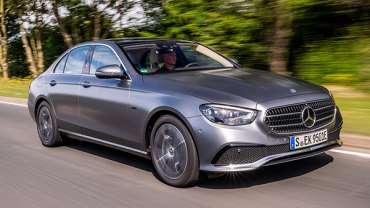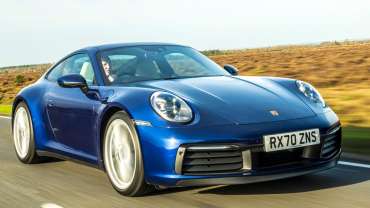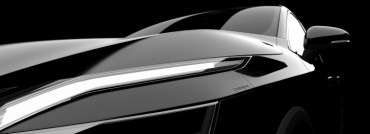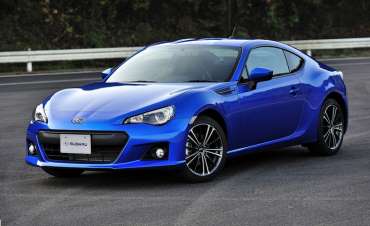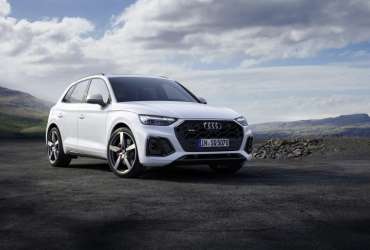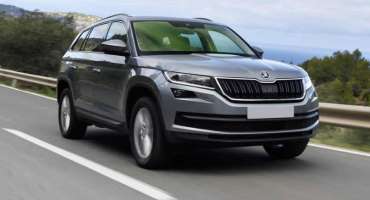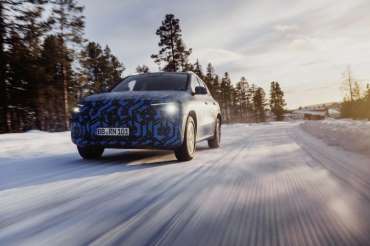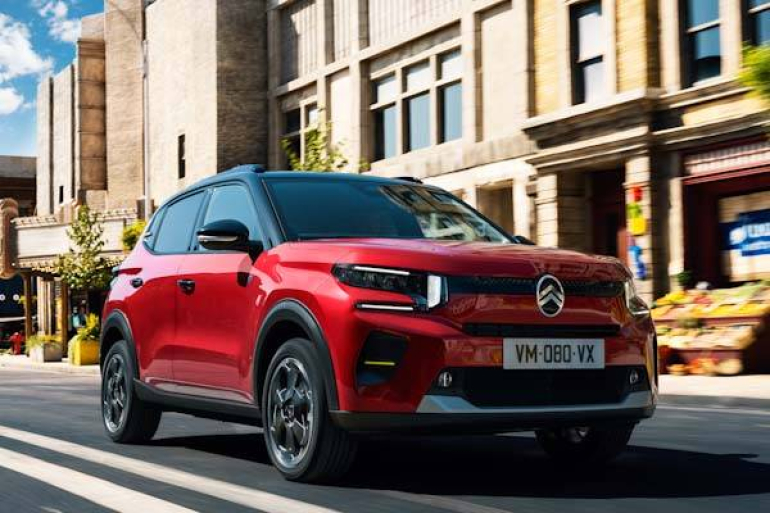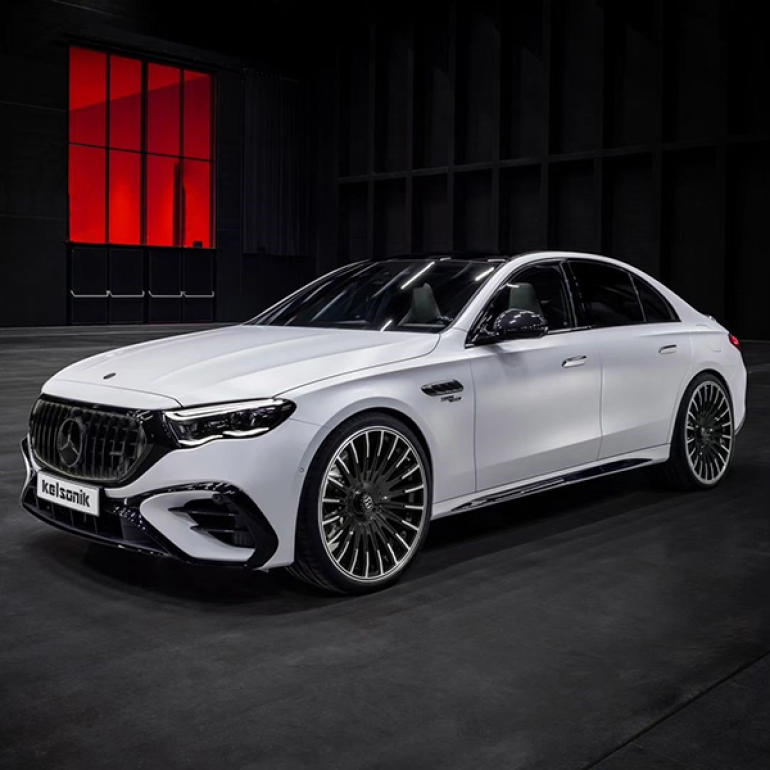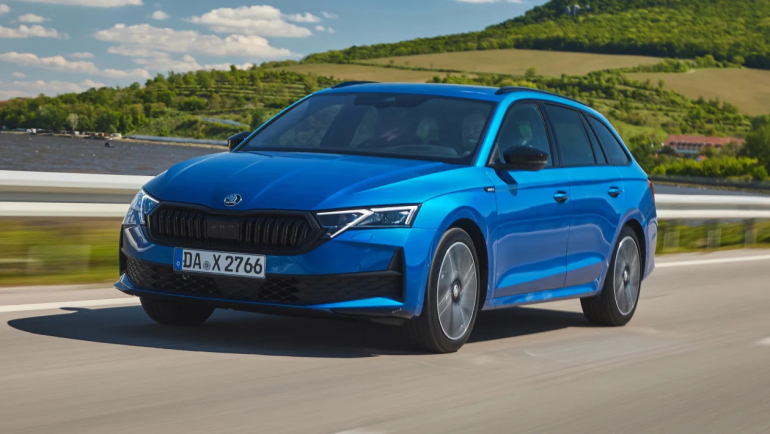
Worldcarblog.com
2021 Mercedes-Benz E 300 e EQ Power AMG Line Premium First Review
The E-Class’s mid-life facelift is limited to a few minor styling changes and some tweaks to the cabin, but it remains an all-round impressive package. It’s still not as sharp as a BMW 5 Series to drive, but the interior blows its rival out the park; some of the tech feels like a bit of a gimmick, but quality, fit and finish are second to none. The E-Class now offers true S-Class luxury at a fraction of the price.
Executive saloons are consistently popular with UK car buyers and still take a sizeable slice of the new car market. However, the sector is changing, with many buyers and fleet managers turning away from diesel in favour of plug-in hybrid drivetrains.
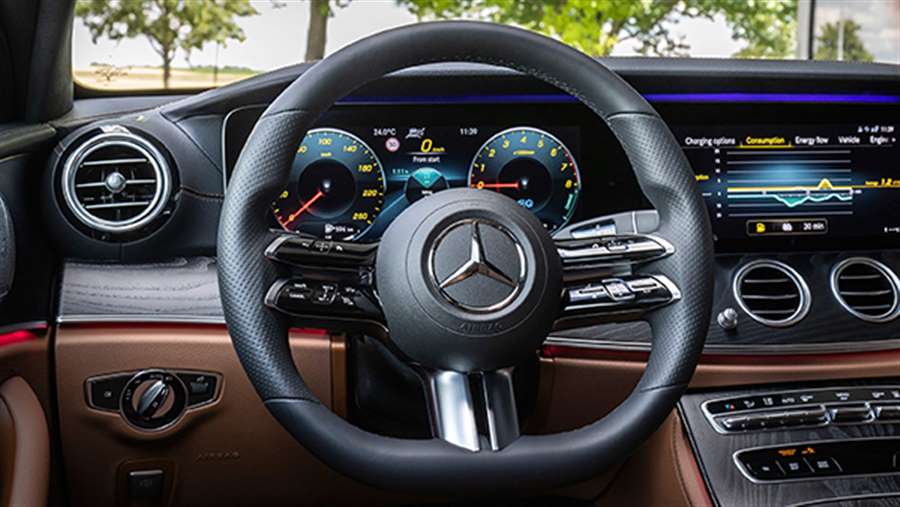
Therefore it’s fitting that our first taste of the facelifted Mercedes E-Class comes in the shape of the E 300 e plug-in. The revisions are limited to a handful of cosmetic tweaks and cabin upgrades with revised infotainment, but the 300 e’s engine and electric motor have been left well alone.
The new infotainment system is an improvement, thanks to the updated and responsive touchpad; Apple CarPlay and Android Auto are both included, and are much more intuitive to use now that the screen can be operated via touch.
The upgraded cabin also features a new steering wheel, with two pairs of thin spokes branching out from the hub. They’re festooned with buttons, which is slightly confusing at first, but no hardship once you’re familiar with it. It also features ‘capacitive hands-off detection’ for use in conjunction with the adaptive cruise control, which includes route and road-based speed adjustment.
The E-Class’s overall feeling of quality is impossible to ignore. From the plush seats to the leather-trimmed doors and centre console, it’s hard to see where Mercedes’ new S-Class flagship will improve on the E-Class’s winning formula. The cabin is perhaps less driver-focused than that of a BMW 5 Series, but you can’t argue with the faultless fit and finish.
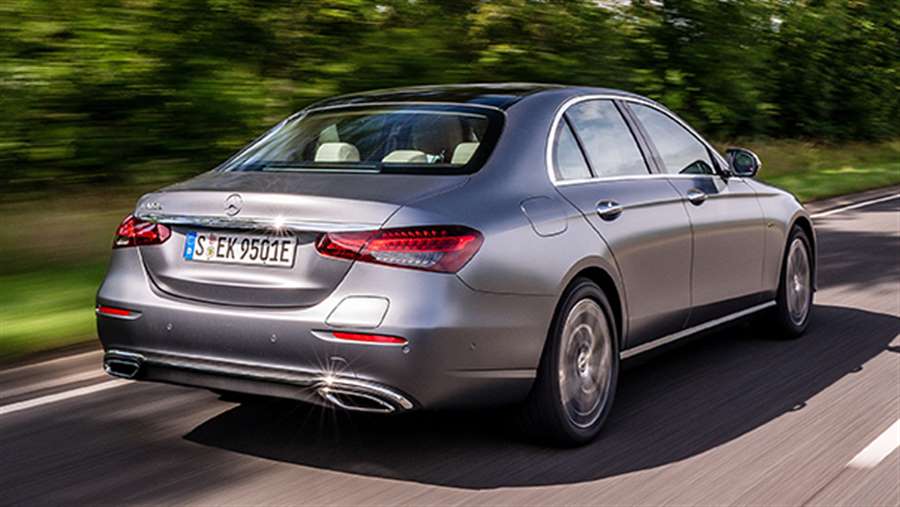
Every E-Class bound for the UK gets twin 12.3-inch digital screens as standard; previously, entry-level cars used a set of analogue dials paired with a large central infotainment display. New LED lights also feature, alongside 17-inch alloys, heated leather seats and a suite of safety kit.
If you’re after the sharpest-handling executive saloon, then the 5 Series still edges the Merc, while the latest Audi A6 arguably pips it for involvement, too. The E 300 e wafts along in a way the BMW can’t, yet it can feel disconnected from the road at times; fine on the motorway, but less engaging on a twisting country road.
The upside of this is that the Mercedes rides well at high speeds – especially on our car’s 18-inch wheels. It’s not perfect around town, but driver and passengers are shielded from the very worst lumps and bumps. Smaller potholes are of little concern, and even larger ones are absorbed with reasonable confidence.
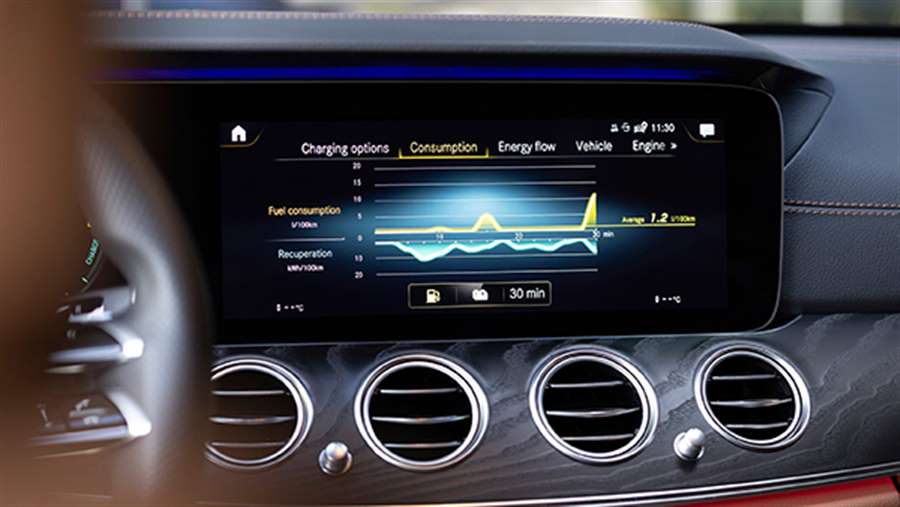
With no changes to the hybrid model’s powertrain or chassis, the E 300 e retains its 2.0-litre four-cylinder petrol engine and electric motor. Combined they produce 316bhp and an impressive 700Nm of torque. As such, performance isn’t lacking; the electrical system’s instant torque allowing access to all that power from a standstill.
Despite its prodigious output, the four-cylinder motor can sound a little strained when you floor the throttle and extend it into the upper rev range. Still, the E-Class more than makes up for this with its incredible refinement – especially when running around on electricity.
Mercedes still claims an electric-only range of around 32 miles on a full charge, and our test drive showed this is a realistic estimate. Even on faster roads, the E-Class’s range read-out dropped very nearly in line with actual mileage covered. The various drive modes allow you to prioritise or hold battery power, or let the system work out what’s best for maximum efficiency.
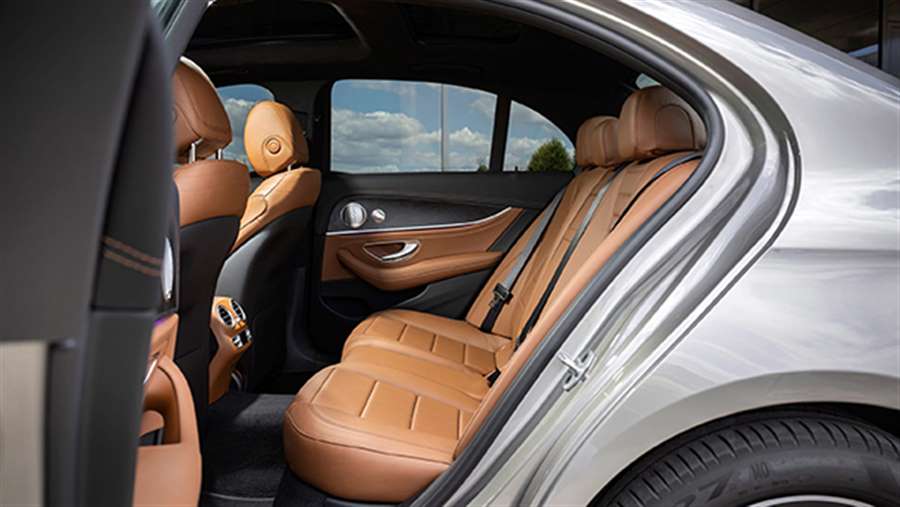
The transition between petrol and electric power isn’t perhaps quite as smooth as it could be, but you’re unlikely to notice the car switching between the two in normal driving. We’d recommend using the battery hold function as much as possible; there’s nothing quite as satisfying as running around town on electric power alone – especially at the end of a long journey.
Charging the E-Class plug-in hybrid is pretty straightforward, thanks to the fact that every E 300 e comes with two cables – one to use with a wallbox or at public charge points, and one for standard three-pin domestic sockets. Owners using the latter are able to top up the battery in around five hours, or just 90 minutes using a 7.4kW home wallbox. There’s no option for high-speed CCS rapid charging, though.
One thing to take into consideration is that the battery does eat into boot space quite significantly, reducing the overall capacity by 100 litres to 370 litres.
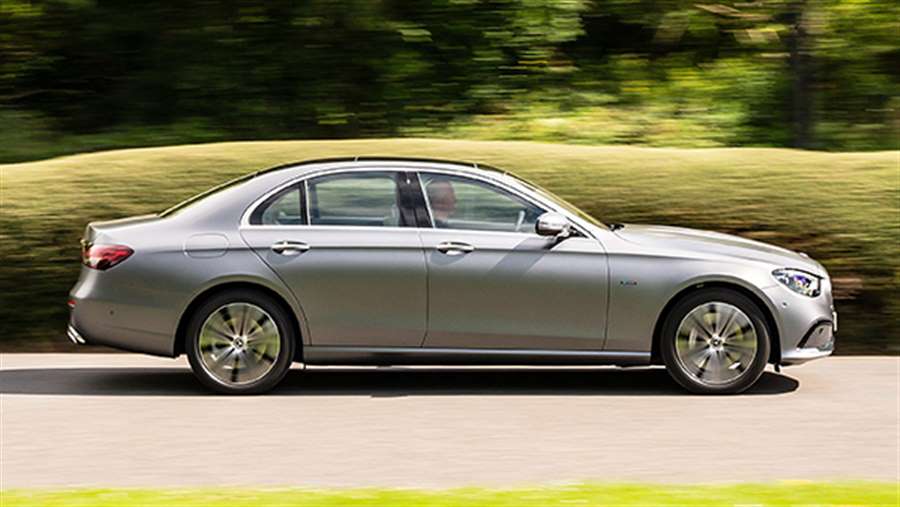
Of course, the main reason many buyers will opt for a plug-in hybrid over a diesel is for the generous tax breaks. The plug-in car grant no longer covers PHEVs, but the E 300 e’s low CO2 emissions mean company car drivers can take advantage of an appealing Benefit-in-Kind rating of 10 per cent for the current tax year. In this regard, an E 220 d can’t come close, although the E 300 de diesel plug-in will hold even greater appeal than the petrol for high-mileage drivers. Read more > https://mercedes-world.com/e-class/mercedes-benz-e300e-amg-review
Source: mercedes-world.com
New Porsche 911 Carrera S manual 2020 review
We find out if the new Porsche 911 Carrera S with a seven-speed manual is the driving enthusiast's choice
Verdict
Objectively, the 911 Carrera S makes little or no sense whatsoever with a manual gearbox, even though the new seven-speed transmission is listed as a no cost option. The car is slower, burns slightly more fuel and is fractionally more polluting than its dual-clutch automatic equivalent. Yet subjectively, it is more engaging, more fun, and more 911 with three pedals, despite the shift itself still not being perfect. In the end it’s the buyer that makes the choice, but for us the manual is now the more appealing sports car.
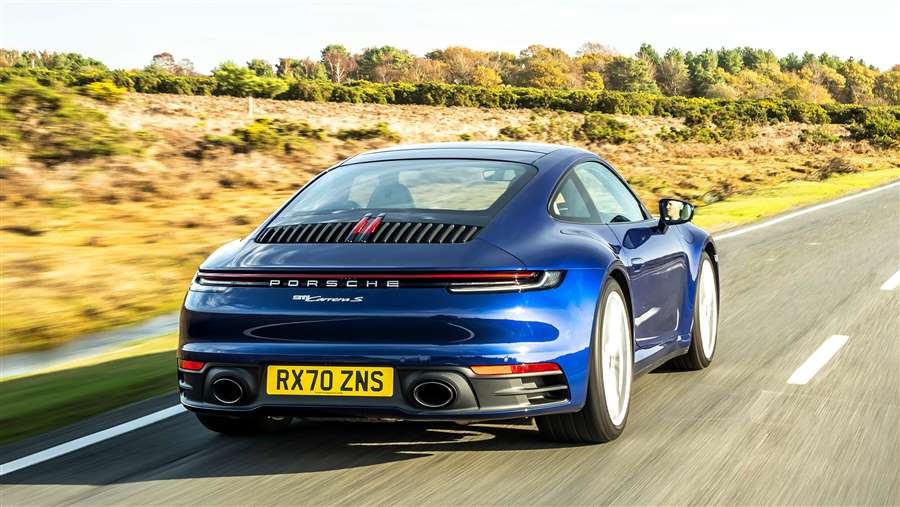
A few years back Porsche announced that it was going to drop the manual transmission not just from the regular 911 line-up but, shock-horror, from the far more focused GT3 versions as well. And at a stroke the world of the die-hard 911 enthusiast was thrown into a flat spin. They couldn’t believe their beloved 911 was no longer going to be available with three pedals in the foot-well and a gearstick between the seats.
Porsche, however, gave several extremely plausible reasons why it had reached this supposedly heretical decision. Without going into too much detail it pointed out that the 911 was faster, more efficient, more economical and, for an increasing number of approving customers, more engaging with a “PDK” dual-clutch gearbox. And for a while, that was that. The fast, manual 911 was no more.
But the enthusiasts continued to holler and eventually Porsche – to its credit – listened to them, even though they were in the minority. First came the 911R with a manual gearbox, then the GT3, and now we have the latest 992 Carrera S 911 available with a seven-speed manual as a no-cost option, tested here in rear-drive form.
In this case you lose 0.7 seconds going from 0-62mph versus the rear-drive Carrera S with a PDK gearbox, and 0.8 seconds during the sprint from 0-100mph (the manual takes 4.2 seconds to hit 0-62mph and 8.6 seconds to cover 0-100mph).
This is partly because you lose one ratio compared with the PDK, which means the ratios themselves are wider. But it’s also a consequence of simply not being able to shift as fast in the manual, up or down, and that’s where the science tends to throw a bit of a spanner in the works – because, subjectively, although the PDK is terribly impressive at what it does, it ain’t no substitute for stirring the lever and using the clutch manually.
Those with a good memory will recall that the previous generation 911 was also available with a manual gearbox for a short time, but the shift quality in that car wasn’t great, which somewhat defeated the object. This time, however, Porsche claims to have significantly improved the action of the shift with shorter, lighter, more precise throws, with seventh still on a dog-leg to the top right hand side of the gate.
And that’s very much how it feels when driving the new manual 911, albeit with one strange caveat which we’ll come to in a moment. What’s good about this 911 manual, no, what’s great about it is that it manages somehow to feel more like a traditional 911 on the move. For whatever reason, the car simply feels more compact and more agile when you’ve to dip the clutch and use your left hand to change gear.
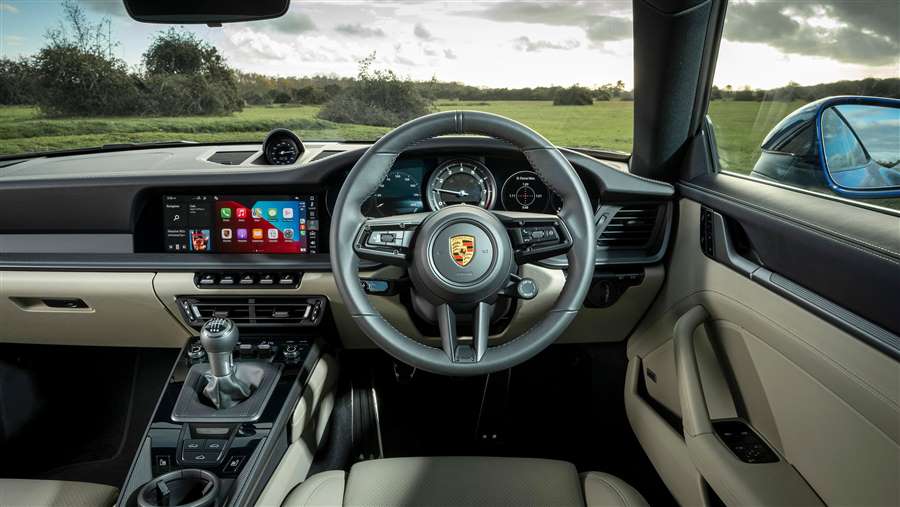
The manual is fractionally lighter than the PDK, but only by 35kg, so it’s highly doubtful this in itself would make much difference to what you feel when behind the wheel.
Instead it’s all about the subjective impression the manual 911 has upon you, the driver. In the most basic terms you simply feel more connected with this car when it has three pedals. And, yes, the shift quality itself is indeed a fair bit crisper and better than in the old manual, although as in the fruitiest versions of the new 718 Cayman and Boxster, the revs will blip themselves on downshifts if you select either Sport or Sport Plus mode via the rotational button on the steering wheel. Which is nice, yes, but also feels a bit automated within this context.
The manual even sounds better and feels every inch as fast as the PDK Carrera S if you select, say, third gear and accelerate from low revs all the way up to the red line. So in reality, and despite the differences in the claimed acceleration numbers, it doesn’t feel like you are losing out on any pure performance versus the otherwise mechanically identical PDK model.
And the caveat? For its own reasons Porsche has again made it impossible to select seventh gear from anything other than fifth or sixth gear when shifting up, same as in the old 991. There’s a mechanical block in the gate which means you can’t physically get seventh from a gear lower than fifth. Which obviously means you can’t go from fourth to seventh. This may sound entirely irrelevant but it’s actually quite annoying in practice because a four-seven is just what you want when entering a motorway, for instance.
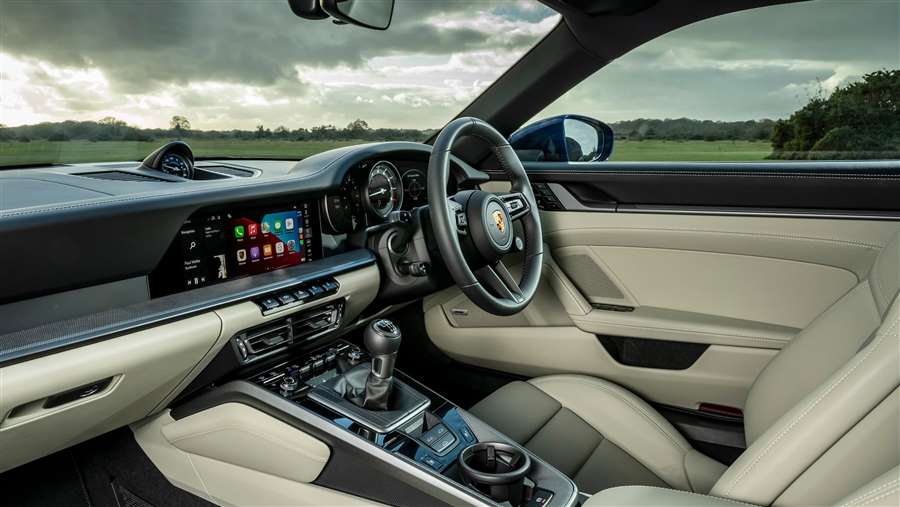
And what’s doubly odd is that you can, should you for some reason choose to, go from seventh to second or even first on the way back down.
Other than this, the manual 911 Carrera S is a very lovely car, one that feels more like a true-blue sports car than its equivalent with a dual-clutch auto. As such it broadens the 911’s appeal even further, catering for around 10 per cent of 911 enthusiasts who might otherwise have looked elsewhere. Including your author, who was once a PDK-only advocate.
Source: autoexpress.co.uk
The first details about the all-new Nissan Qashqai
One of the first and best-selling mid-size SUV models in the world is Nissan's "Qashqai". The third generation of this crossover is now in preparation, which, according to the announcements, will bring many changes in design and advanced technologies. As expected, electrified versions will be offered for the first time.
As a pioneer in the medium crossover segment, the "Qashqai" has been sold in Europe since 2007, where over 3 million units have been produced to date.
By the time it was replaced by the second generation in 2014, 17 direct competitors followed the "Qashqai" in the market with their models.
Despite the arrival of many European competitors, the first generation is sold in over 200,000 units per year during its lifetime.
Now the current model has as many as 26 direct competitors, among which are: "Renault Kadjar", "Ford Kuga", "Hyundai Tucson", "Mazda CKS-5", "Skoda karoq" and many others.
That is why it is very important for the new generation to continue at a successful pace and that is why its approach is very serious.
The new Qashqaii is based on the all-new CMF-C (Renault-Nissan) platform. It has been announced that it will use technologies from higher categories of cars, as well as that the proportions will be maintained. In terms of construction, the body will be lightened by as much as 60 kg, but also 41% stronger.
For now, it is known that it will be offered with front-wheel drive and 4 × 4, as well as with a 1.3-liter gasoline engine with mild hybrid technology, and Nissan's innovative e-POVER system, which contains an electric drive, is mentioned.
In conventional hybrid wheel systems, it is powered by an electric motor and a petrol engine, however, in the e-POVER system, the petrol engine is not connected to the wheels - only on a full battery.
The new "Qashqai" will be equipped with the next generation of ProPILOT for driving assistance, and the premiere is expected in the spring of 2021.
2013 Subaru BRZ First Drive
From the Archive: Subaru has the goods, presenting us with an exceptional, clairvoyant, delectable new rear-wheel-drive sports car.
Some things just don't make sense. Why is the food at Outback Steakhouse mostly Cajun style? Why can't Jennifer Aniston find true love? And why would Subaru and Toyota, two companies whose fortunes are built on mainstream sedan sales, collaborate on a rear-drive sports car?
The latter question is a bit easier to answer from the Subaru BRZ perspective. For one, Subaru has a currently breathing reputation for building sporty cars: They may sell in limited volumes, but the WRX and STI are nevertheless Subarus. And Subaru says that the engine in its BRZ, a 2.0-liter flat-four making its first public appearance in this car, will form the basis of its next turbo motor. For its part, Toyota says that its version of the car—to be sold as the Toyota 86 in Japan, as the GT 86 in at least the U.K., and as the Scion FR-S here—makes sense as a first thrust in its plan to again build sporty, fun-to-drive vehicles. Still, this isn't a car that most people saw coming from either manufacturer.
Cheese Fries, Please!
Then again, regardless of the boomerangs mounted on the walls and the "Chaze Frois, Plaze!" coasters, Outback Steakhouse's Alice Springs chicken is delicious—and devastatingly unhealthy, but that's beside the point. The BRZ is likewise delectable; our only gripe about the way it drives is a chassis that leads to understeer at the limit. That, however, is much less likely to give you a heart attack than a jumbo honey-mustard-marinated chicken bosom hidden under a pile of bacon and smothered in melted cheese. Indeed, right up until the nose starts to chatter off line, Subaru's new coupe is gifted with exceptional balance and clairvoyant reflexes.
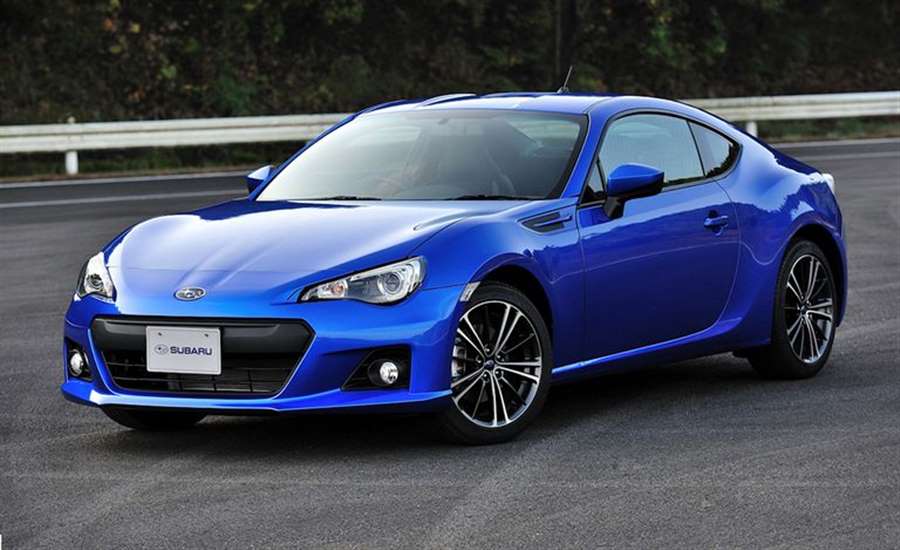
The understeer isn’t a deal breaker; with perfectly timed and moderated inputs (or with huge, pimp-slap jerks on the wheel and heavy stomps on the go pedal), it is possible to avoid it all together and turn it into delicious oversteer. When the rear end goes, even in the wet, the BRZ slides slowly and progressively. It's so easy to catch that you might find yourself fishing in your pocket for spare change with one hand while the other meters yaw around an off-ramp. (Subaru says that Toyota's suspension tune will vary slightly, a tad softer in the front and stiffer out back.) The brake pedal feels a little less wired than the rest of the car, but the binders wind the speedo back toward 0 in a hurry.
Conducting the chassis is steering that is more immediate than anything this side of the Lotus factory. Its heft is perfect for resisting unintentional inputs at the limit. Feedback falls short of perfection, but only slightly; blame the electric steering if you must. The electric motor assisting the BRZ's rack is mounted high up on the firewall, contributing to a slightly higher center of gravity but simultaneously shifting the front/rear weight balance a touch rearward.
In developing the BRZ, Subaru took an almost maniacal approach to weight and its management, keeping it low and evenly distributed between the car's axles. The company claims that 54 percent of this car's mass rides on the front wheels and 46 over the rear, and says that its center of gravity is right around 18 inches high. That latter figure rivals or beats the measurements for the Porsche Cayman and Mazda RX-8, among others.
Helping keep the mass snug against Mother Earth is the FA flat-four. Compared to the FB four found in other Subies, the FA's intake is 2.6 inches lower and the oil pan clings closer to the crankcase, allowing it to be mounted with its crankshaft centerline 2.4 inches lower. Amazingly, the engine is mounted 9.4 inches farther back in the chassis than an Impreza's four. A Subaru spokesman says the two engines share "maybe a few screws," but are otherwise completely separate pieces. We're told the weight difference between the two is negligibly in favor of the A. Placing the engine so far rearward of course helps balance the car, but it also precludes Subaru from fitting an all-wheel-drive system. The company says that it has no room for a turbocharger either, but after peering under the hood, we disagree. Besides, Subaru desperately needs something to tie this car to the rest of its lineup, and a turbocharged STI model would be the perfect solution. Although the BRZ doesn't need more power, it certainly could handle more. We're guessing that a turbo will be part of whatever mid-cycle updates this car sees in two or three years.
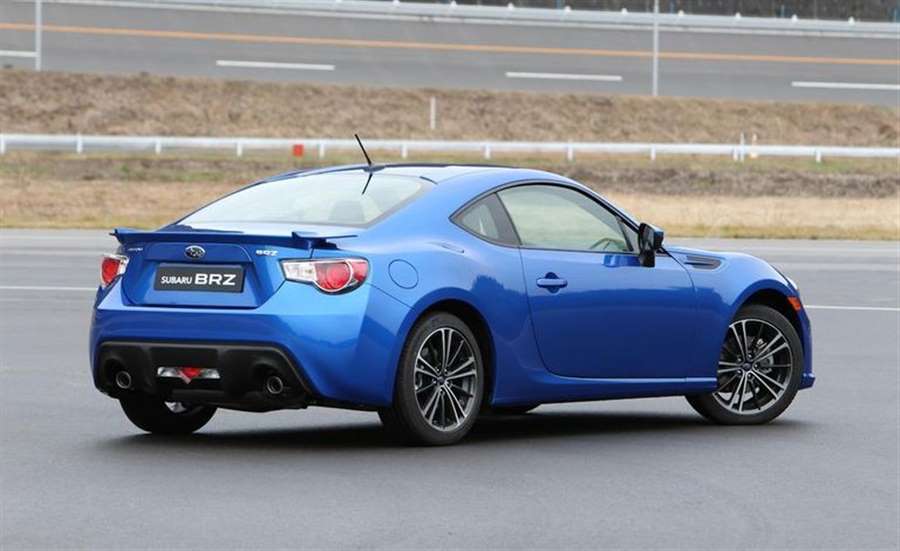
Despite a displacement difference of just 3 cc, the naturally aspirated FA and FB fours have dramatically different outputs. The B's 148 hp and 145 lb-ft of torque (as installed in the Impreza) lag 52 and 6 behind the A's 200 and 151—Subaru's stated output—while the A's 7400-rpm redline is 800 higher. Thank Toyota's fuel-injection setup, which squirts both via intake ports and directly into the cylinder—the system is Big T's lone contribution to the engine—and allows a crushing compression ratio of 12.5:1. "Crushing" is not a descriptor we'd employ for the acceleration, although we estimate a zero-to-60-mph time of around six seconds flat with the six-speed manual; add a couple of tenths with the six-speed auto. Top speed is said to be 143 mph. A resonator pipes sound into the cabin, and above 5000 rpm, there's enough noise inside the car that you'll need to scream to talk. Not that you'll be having much conversation. That said, we wouldn't call the quality of the sound unmistakable; it could be taken for a number of undesirable things. Having heard what aftermarket exhaust companies do for other Subaru flat-fours, though, we’re confident that they can coax a better voice out of this 7400-rpm screamer.
In spite of its higher output, the FA should still manage 30 mpg on the highway, according to Subaru. Underbody paneling helps keep a clean aerodynamic profile, although the company still hasn't decided if the treatment will be standard on all U.S. cars or only on higher trim levels.
Even the Weenies are Treated Well
As mentioned, two six-speeds are available, a manual and an automatic. Following our drive of the BRZ in Japan, the manual had us seeking a temple at which we might make an offering of thanks. The clutch pedal is a touch light—and a touch light on feel—but snaps to attention right off the floor and engages smoothly, and the stubby shifter snicks between gates with ease. Heretics who buy their sports cars with automatics will at least get a good unit. There are two modes in the Subaru: Drive and Sport. Wheel-mounted paddles are standard; in D, the transmission allows them to make gearchange suggestions but still upshifts at redline and downshifts when the driver floors the accelerator. In Sport mode, however, paddle commands are gospel—the way God's lazy, automatic-driving half-brother intended.
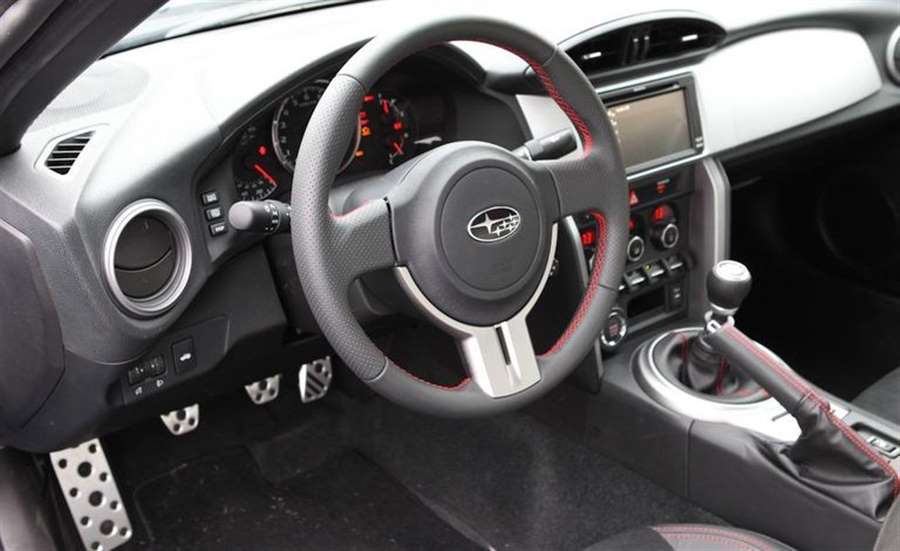
While most of the engineering and chassis work is Subaru's doing, the styling fell to Toyota. It apparently drew a basic coupe shape and—well, it must have seen it created something less than sultry but stuck with it anyway. It's good enough. The view from abaft is actually fairly exciting, with the slope of the greenhouse hesitating just slightly to form a decklid before tumbling into the rear fascia. Only the front fascia, badges, and maybe wheels separate the BRZ from its Toyota—and Scion—sibling. The suggestion of flares on the front fenders merely alludes to the muscular (some might say exaggerated) styling of the various concept cars, but the U-shaped view from the driver's seat over the scooped-out hood is at least unique. Visibility in all directions is much better than most sports cars.
Interior space, on the other hand, is just about par. It's fine up front, and average/shortish adults might even be happy in the back for shorter trips. Subie touts this as the shortest rear-drive 2+2 on the market. So it is. It also says that the car can accommodate a forward-facing child seat in the back. A rear-facing seat, on the other hand, would probably only fit if the parent riding shotgun rides shotgun in a car following behind. The trunk will hold just seven cubic feet of stuff, although both halves of the rear seatback fold for larger loads. According to Subaru, the space was designed from the beginning to hold a set of racing tires and a toolbox in this configuration, although that claim coincided with a PowerPoint slide entitled "Unexpected Utility"; we suspect that's probably the real story behind the tire-hauling ability. Or maybe that's why the tires are just 215 millimeters wide, as fitting a set in the car requires a two-tire stack.
The BRZ goes on sale in spring of 2012 as an early '13 model, at a base price we're now told will be around $25,000. Asked to make sense of the BRZ, a Subaru representative says, "It makes sense if you sell enough of them." In the U.S., Subaru thinks that 5000 to 7000 per year would be enough. Ultimately, though, a car this good doesn’t need to make sense: Its brilliance is all the explanation we need.
Source: caranddriver.com
V6 TDI for gentleman: New Audi SQ5
Audi's best-selling model is the Q5 SUV. It was thoroughly redesigned in July, so that in September we could see its first ever "sportback" version. However, in Eastern Europe, a diesel with the prefix "S" was the most awaited. And not because of the purchase, but mostly because of mere enthusiasm. Well, here are the sweet numbers: 3.0, V6 TDI, 350 hp and 700 Nm; from 0-100 km / h in 5.1 seconds. But here are a few bitters: the starting price is almost 70,000 euros.
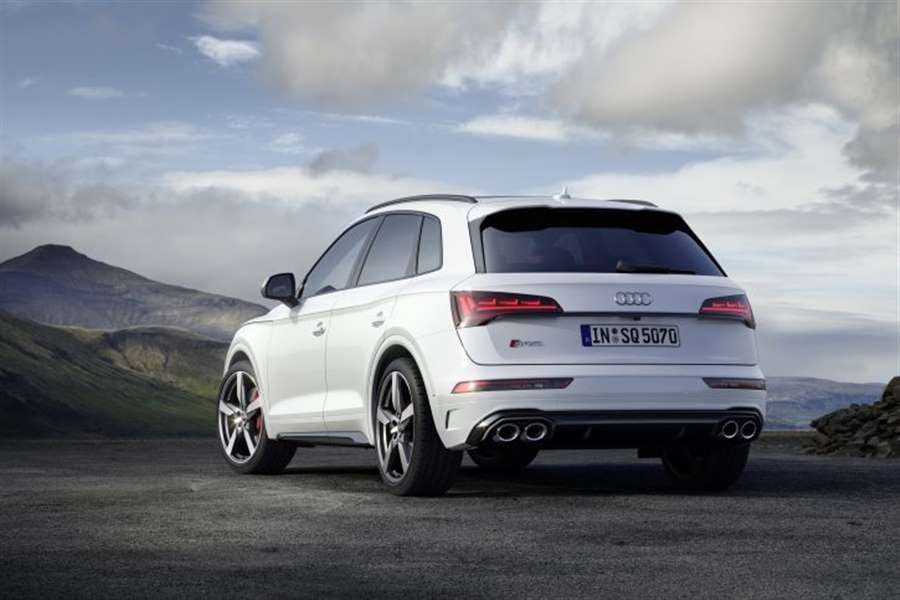
In addition to the powerful engine, the new "SQ5" got a more sporty look compared to the standard model: the front has a large octagonal grille and larger air intakes. And this version, at an additional cost, can be equipped with new OLED headlights and taillights.
These are digital diodes arranged in three parts, with six segments each, the display of which can be personalized, changed depending on the driving mode, and also reacts to dangerous traffic situations. By the way, LED matrix headlights come with the "SQ5" as standard.
At the rear, the changes are slight, while the four oval ends of the exhaust pipes stand out the most.
The cabin can be black, gray or red. The new Napa leather sports seats are adorned with the “S” logo, and also offer a massage option. The premium cab is enriched with brushed aluminum trim, while the top-of-the-line "SQ5 Vorsprung" offers carbon details.
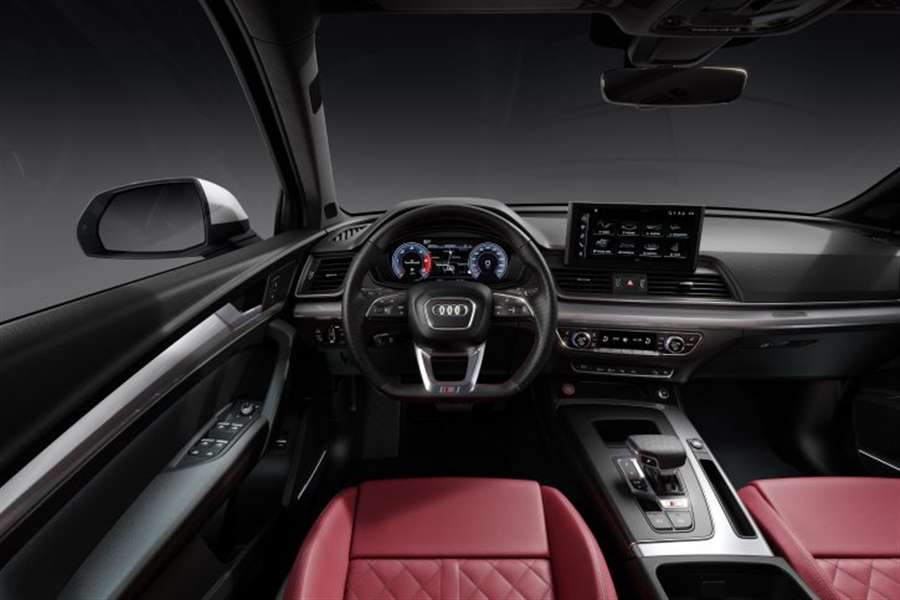
A novelty is the latest generation of MMI infotainment system (MIB3), which is displayed on a 10.1-inch screen. In front of the driver is a 12.3-inch digital instrument panel (Virtual Cockpit), and there is a "head-up" display. The functions in the vehicle are controlled in three ways: with the buttons on the steering wheel, via the touch screen or by voice.
As in the standard "Q5", there is plenty of space in the rear, and the practicality is emphasized by the option of moving the seat of the rear bench back and forth, while the backrests can be adjusted. The trunk has 520-1,520 liters.
As for the engine, it is a lighter and more efficient V6 TDI engine, with a volume of three liters, which uses advanced 48-volt mild hybrid technology.
Power is 350 hp, while 700 Nm of torque is now available at lower revs, between 1,750 and 3,250 rpm.
This 4.7-meter-long SUV reaches the "cattle" in just 5.1 seconds, while the top speed is 250 km / h.
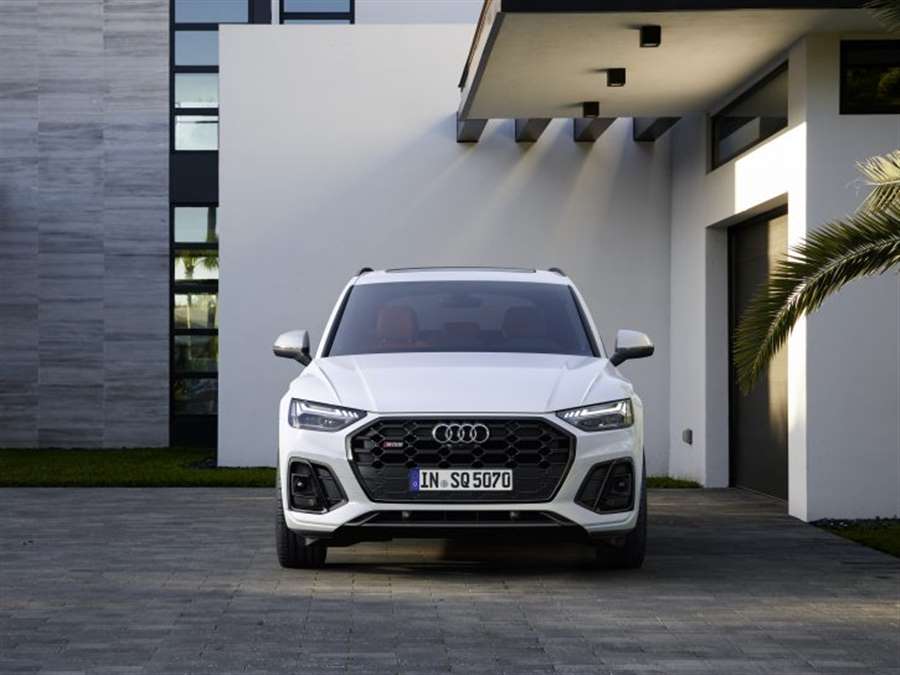
As before, the "SQ5" is 30 mm lower than standard and is equipped with sports suspension, as well as six different driving modes: Auto, Comfort, Efficiency, Dynamic, Off-road and Individual. With the "Vorsprung" version comes a sports differential on the rear axle.
The starting price for the "SQ5" in Germany is 68,138 euros.
Skoda Kodiaq Review
The Skoda Kodiaq is a big, practical family SUV that’s available with seven seats – although the rearmost two are only big enough for kids.
Is the Skoda Kodiaq a good car?
If you’ll forgive the tired cliche, the Skoda Kodiaq is like a Swiss army knife. It’s got all the tools to suit any situation, and once you’ve driven one, you’ll wonder what you did without it. It’s best aspect is its practicality, though, as it’s massive inside.
It’s a seven-seater SUV like the VW Tiguan Allspace and SEAT Tarraco, and it’s available in lots of configurations, from a diesel front-wheel-drive manual right up to a powerful four-wheel-drive automatic petrol called the vRS.
It’s not the biggest seven-seater, but it’s very roomy on the inside, but a seven-seater MPV like a Renault Scenic is slightly better for carrying lots of people around, because the rearmost seats in the Skoda are only useful for kids.
It’s at its best as a five-seater, because in that configuration there’s an absolutely enormous boot. In five-seat mode there’s room for everything you need for a family holiday with space left over, and with all the seats folded down, it’s van-like in there.
This is the first seven-seater Skoda has ever made, and it’s spot on for family life.
Mat Watson
carwow expert
The interior is practical too, with plenty of clever touches, but it’s also good quality. The plastics and materials used look and feel good, and build quality is high. It makes the Kodiaq feel a lot more upmarket than a Nissan X-Trail, for example.
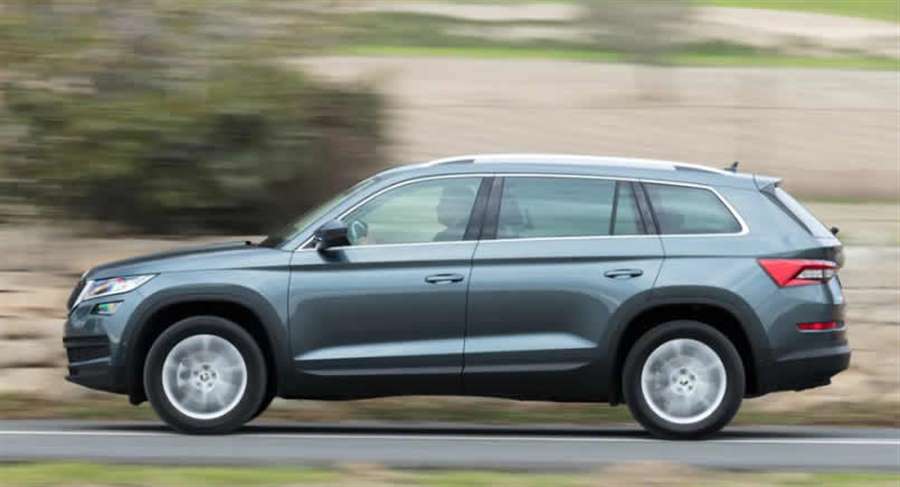
Plus, the Skoda Kodiaq is really easy to drive. There are some blind spots, but the high driving position gives a good view forward and the steering is very light. The same is true of the gearshift in manual models, and auto versions are even easier.
The suspension is a little firm around town at low speeds but it settled down nicely on the motorway, so the Skoda is comfortable overall. Versions on bigger wheels aren’t as comfortable so the lower-spec cars actually make more sense.
There’s a great range of engines to pick from, too. The 1.5-litre petrol model is a highlight, thanks to a good mix of performance and economy, but if you’re off-roading or towing in a four-wheel drive car, we’d go for the 2.0-litre diesel as it’s really torquey. The vRS model is fast but not all that fun to drive, so we’d stick with more pragmatic models.
A five-star Euro NCAP safety rating means it’s one of the safest SUVs around, so you can be relaxed about it acting as a family bus. Plus, a recent update added even more safety kit, including predictive adaptive cruise control, that steers, and adjusts your speed for you. It’s like finding another tool in your Swiss Army knife you hadn’t used before: once you know what it’s for you’ll wonder how you managed to live without it.
Read on for more information on the Skoda Kodiaq, or see how much you can save with these Skoda Kodiaq deals.
Common Skoda Kodiaq questions
Is the Skoda Kodiaq a 4×4?
Most versions of the Skoda Kodiaq come with four-wheel drive, but 125hp and 150hp petrol models and 115hp and 150hp diesel models come with front-wheel drive have to make do with front-wheel drive as standard.
Is the Skoda Kodiaq a 7-seater?
Entry-level Skoda Kodiaq models in S trim come with only five seats, but all other versions can be had with seven seats. Pick a high-spec Sportline or Scout version and you get seven seats as standard.
Where are Skoda Kodiaqs made?
The Skoda Kodiaq is built in six factories worldwide, but the majority of cars sold in Europe come from the firm’s Czech facility in Kvasiny.
Skoda Kodiaq interior
The Skoda Kodiaq’s dashboard is smartly designed and easy to use, but it doesn’t get the same high-tech features as the VW Tiguan.
Style
The Skoda Kodiaq interior is of good quality and feels well-built. The dashboard, doors and centre console are all covered in nice soft-touch plastics, while the seats – trimmed in suede-like Alcantara on high-spec SE L models – are supportive and help make the interior feel genuinely upmarket.
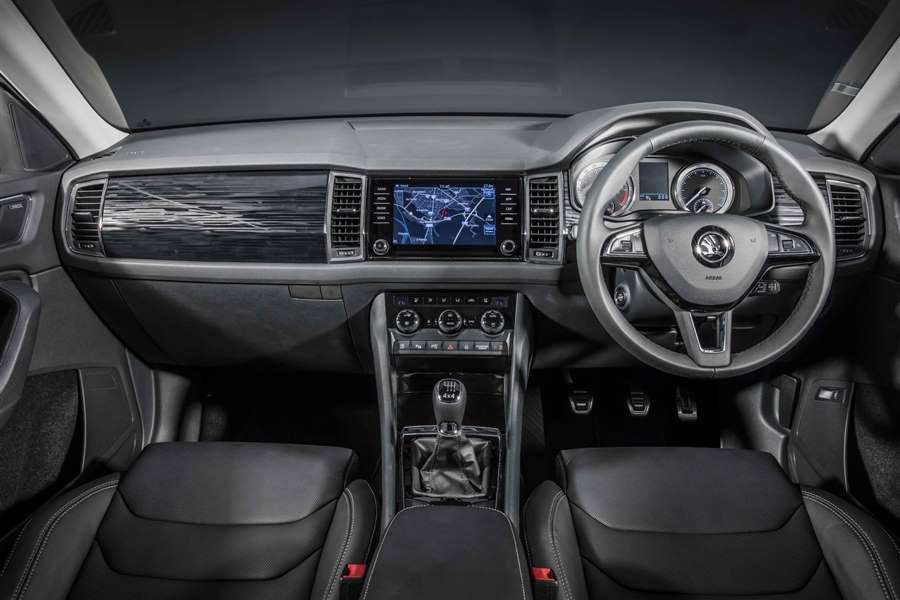
Everything is pretty easy to operate, too, as you’re not faced with a huge number of buttons; and, the knobs for the ventilation system and stereo volume are easy to operate when you’re on the move.
The standard infotainment system is operated through an 8-inch touchscreen, which is flanked by two banks of shortcut buttons and a pair of neat vertical air vents, while the gloss black wood-effect dashboard trims look great – even if they’ll scratch easily over time.
However, it’s not all good news: the second digital display in the instrument cluster looks significantly more dated – think Game Boy rather than iPad – and some materials in the rear feel brittle and cheap; but, in both cases, this is nit-picking.
Infotainment
Entry-level Skoda Kodiaq SE cars come with an 8-inch touchscreen infotainment screen. It’s sharp, bright and easy to read, and comes with a set of handy shortcut buttons to stop you getting lost in a sea of menus. Unfortunately, these buttons don’t buzz or click when you press them so you’ll have to occasionally take your eyes off the road to make sure you’re hitting the right ones.
A neat proximity sensor displays extra on-screen buttons when it detects your hand nearing the screen. This is especially useful when you’re using the built-in satellite navigation on SE L cars – it’ll flash up petrol station icons when you reach for the screen and hide them away automatically so you can see the map more clearly.
The standard sat-nav can rapidly calculate three route choices at once and you can swipe and pinch to zoom to preview its directions – just like using a smartphone. Unfortunately, the screen’s glossy finish shows up grubby finger marks like nothing else.
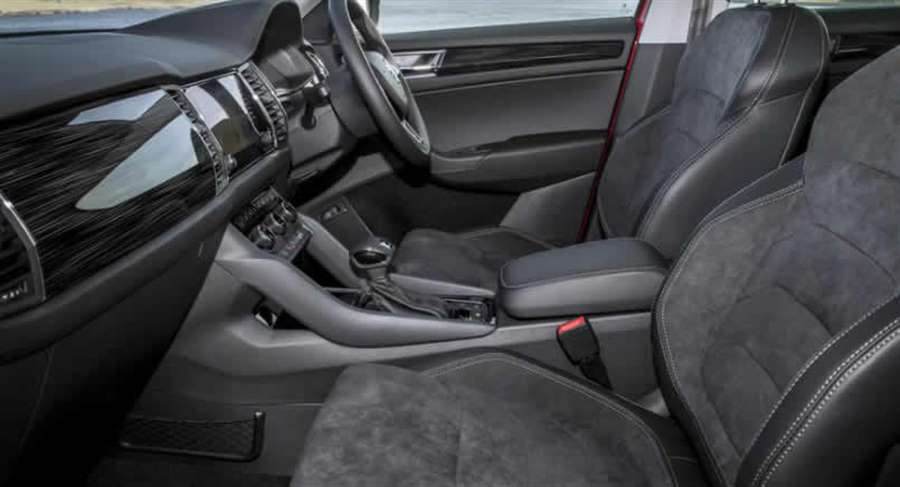
Happily, Android Auto, Apple CarPlay and MirrorLink connectivity to mirror your smartphone’s navigation on the built-in infotainment screen is standard on all Kodiaqs.
High-spec SE L models come with a larger 9.2-inch touchscreen infotainment system while top-spec Edition versions have a wireless smartphone charging feature that’ll also boost your phone signal.
Unfortunately, if you like to stream music from your phone, the standard stereo just isn’t up to scratch. The Skoda Kodiaq’s Bluetooth connection makes your music sounds tinny and bassless – things sound much better when you connect your phone using the USB port. Upgrade to the Canton sound system and you’ll be rewarded with much clearer and bassier tunes.
First look at the EQA - Mercedes' smallest electric model
Mercedes-Benz has already announced a real revolution in the segment of electric models, so several novelties from the EQ family are expected in the coming period. The smallest among them will be EQA, which arrives next year.
Although it was primarily said that compact Mercedes models will arrive only in 2025, today the German manufacturer showed a video in which it announces the smallest model EQA for next year.
This model will be a counterpart to the GLA class in terms of base and dimensions. So, it is a small crossover, but with an electric drive, and of course, a slightly different design.
Recall that future Mercedes EQ power models will be developed on two platforms: EVA for oversized models and MMA for medium and compact electric models. EQA (GLA class) and EQB (GLB class) will be based on the second.
It is speculated that the EQA could use two electric motors (one on each axle), with a total power of 268 hp. Also, the range is expected to be around 400 km.
While we are waiting for most of the novelties, some electric "Mercedes" are already known to the public, and they are: EQC (electric GLC), then EQV (V-class on electricity), as well as EQS, whose premiere is expected soon.
The EQS will practically be an S-class on electricity, which the Nova.rs portal has already written about, so find out the details about the luxury sedan, which are known so far, at this link.
Take a look at the first spy shots from driving the smallest electric Mercedes.
{vembed Y=gqj4EaHWM_M}

